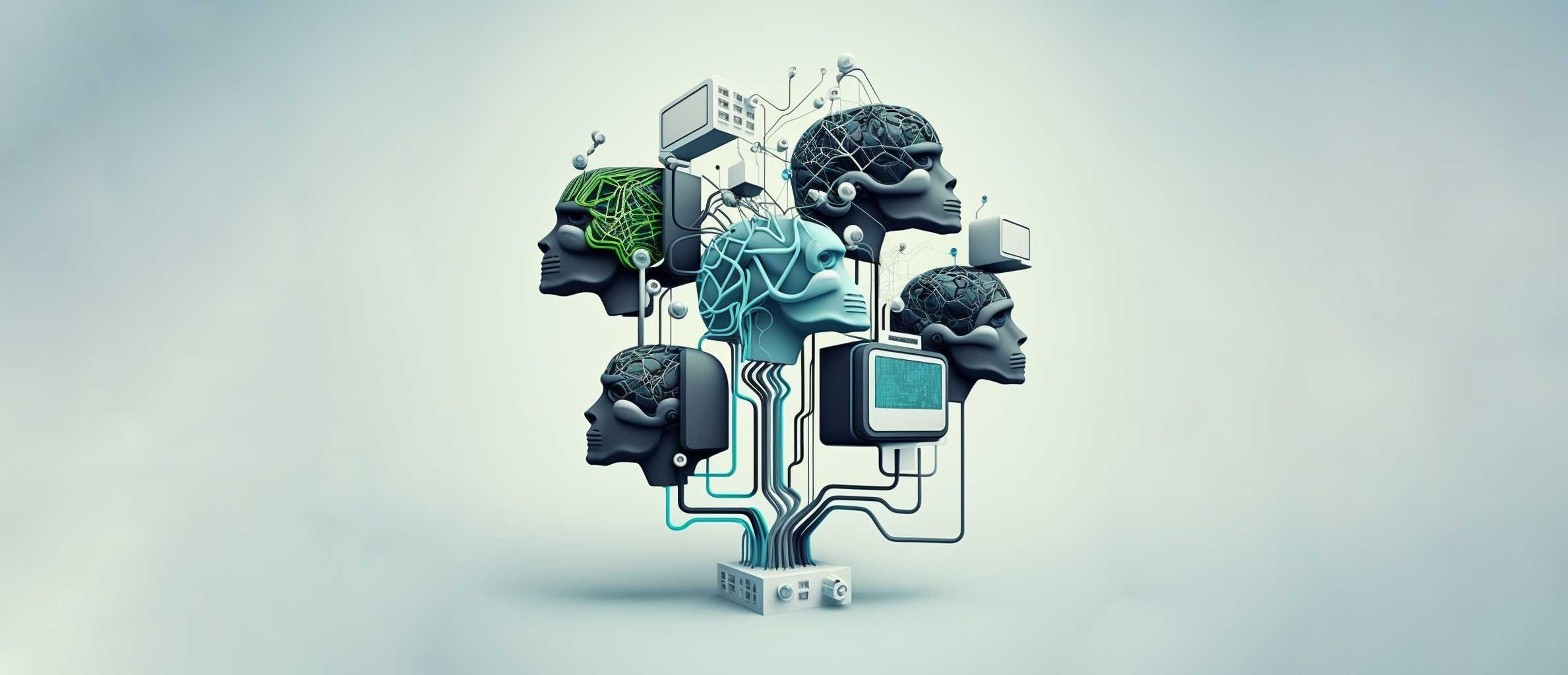The Designer's Secret Weapon: How ML is Revolutionizing Web Design
Robot brains connected to screens - Generated with Midjourney
UPDATE 2.6.23—I’ve decided to correctly refer to these systems using their actual technologies (i.e. ML—Machine Learning) rather than the market-speak and false narrative of AI (Artificial Intelligence). The article has been updated accordingly.
As I write this ML (machine learning) is revolutionizing the way we approach UX (user experience) research and design. One of my biggest hopes for the technology is for it to help designers overcome the dearth of creativity in the modern web, creating new experiences that are unique, usable, and accessible.
One of the ways ML is doing this is through services like ChatGPT. ChatGPT is a large language model that can generate human-like text, which can be used to create more natural and engaging interactions between users and digital products. Imagine integrating it into existing sites to replace some intake forms. This can help humanize the web by making interactions with digital products feel more natural and personal, even conversational. Or instead of working to tweak your Google query to find the right website, just ask chat your question in plain language and get the data you're looking for directly.
Screenshot of a ChatGPT prompt to summarize this article
Another great way to utilize ML like ChatGPT is by integrating it into existing sites in the form of support, chat, and even forms. This can help humanize the web by making interactions with digital products feel more natural and personal. Imagine filling out a form that can understand and respond to your input in a conversational manner, making the process less tedious and more enjoyable. By using ML in this way, we can create a more seamless and enjoyable experience for users on the web, making them feel like they're interacting with a real person, rather than just a machine.
Here are just a few ways it's already happening today.
ML can assist designers in creating accessible experiences. ML-powered tools and plug-ins can analyze designs and identify accessibility issues, providing designers with instant, actionable feedback. This can help designers ensure their designs are inclusive and can be used by a diverse range of users.
Blind woman reading with ML-enhanced glasses - Generated with Midjourney
ML can nudge designers to expand their creativity by equipping them with tools and insights to inspire new ideas and approaches to design. ML could analyze user data and behavior, providing designers with valuable insights into how people interact with digital products more quickly.
ML-powered tools like Ando can inspire designers in generating new design solutions through the use of generative design techniques. These techniques use algorithms to generate multiple design options based on a set of design constraints and goals. This can help designers explore a wider range of design possibilities quickly leading to more innovative and unique solutions faster.
ML can work in the implementation of designs by automating repetitive tasks like alternate version generation, layout, and optimization. This can free up designers to focus on the more creative aspects of their work, leading to more efficient and effective design processes where designers spend more time on the things they love, and less on the things they don't.
Mobile app to purchase stock - Generated by Midjourney
ML can be a valuable tool for designers, providing them with new insights, inspiration, and automation capabilities that can help them create more unique, usable, and accessible experiences on the web. As designers, we should rejoice in the future as ML tools become more available (and usable) to create truly unique and usable experiences accessible to everyone.
If you have other suggestions of how ML can positively enhance modern design work drop me a line! As to the negative aspects, I'll need to address that in a follow-up post.
Author’s note: This article was written with the assistance of ChatGPT, with a GPTZero score of “81.4: text is likely human-generated”
Landing page for a window company - Generated on Midjourney by @ToggleWords




